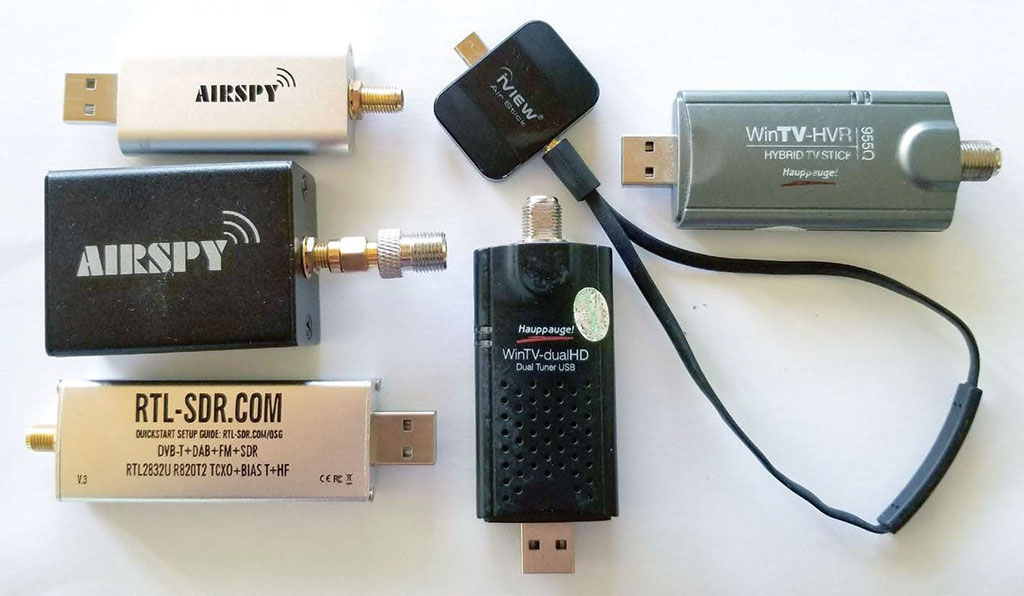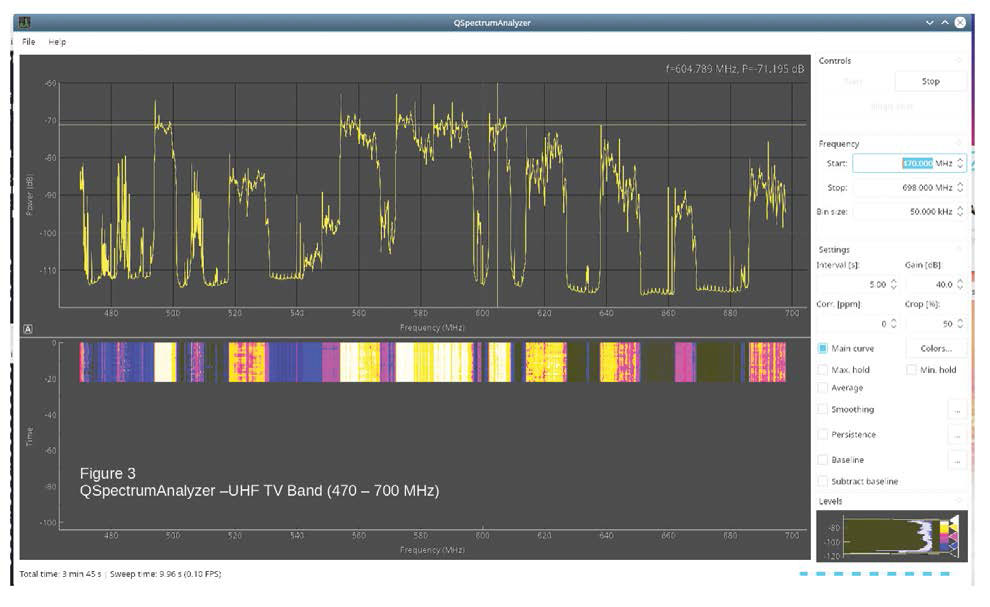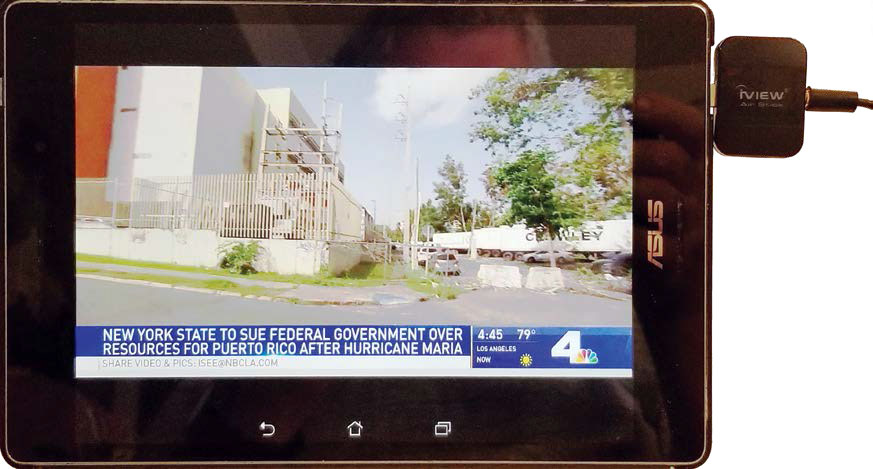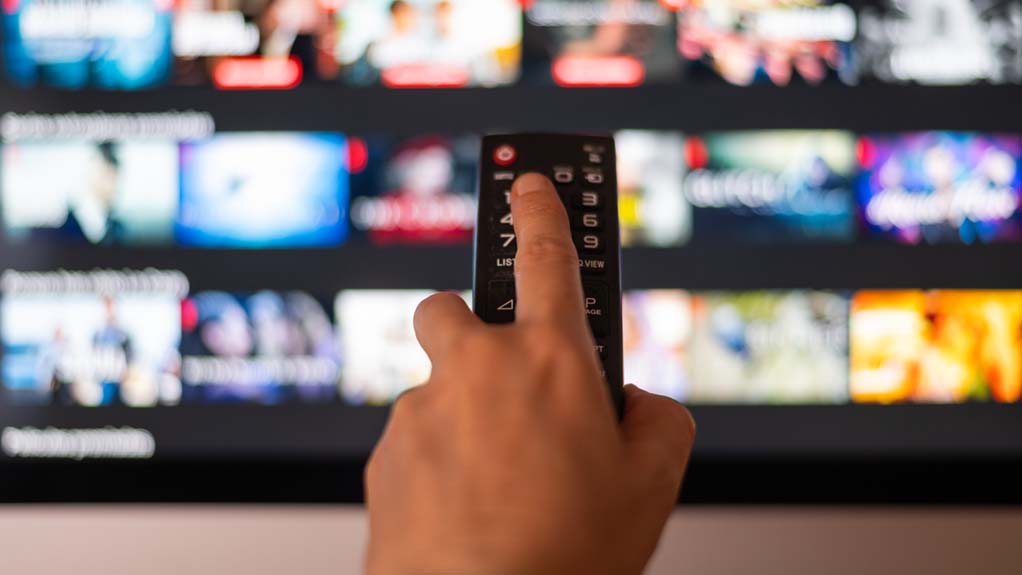Inexpensive Tools for RF Field Measurements
In my last column I described measurements I made on some indoor TV antennas. The “Spectrum Spy” software and Airspy SDR I used for those measurements can also be used as part of a very portable, simple, inexpensive field measurement setup.
This setup is not a replacement for professional field measurements done using a 30-foot mast, precision test equipment and a cluster of measurements in each location. The lower antenna height will be more affected by ground reflections and local obstructions and the accuracy of inexpensive consumer devices can vary.

This simple setup will provide some confidence the transmission facility is working and provide a comparison with stations at the same location on channels close to the one being measured.
The procedure is similar to one I described several years ago for measurements in Philadelphia (“Using TVStudy To Map Coverage, Interference,” June 26, 2013), except that a full-size spectrum analyzer is not required. Given a suitable laptop for the programs, the entire package can be put together for under $200 using a $70 Hauppauge WinTV dualHD USB tuner, the $28 RTL-SDR dongle, a $40 antenna, a length of RG-6 coax and a $34 extension pole.
ANTENNA SETUP
For field testing, I prefer the Winegard FreeVison FV-HD30. While too large to pack in a carry-on bag, it is readily available at Home Depot and other retailers. It doesn’t require a power supply, is reasonably sturdy and provides acceptable reception at VHF. A log-periodic antenna, like the Blonder Tongue BTY-UHF-BB or Scala CL-1469B will have flatter response across the UHF band, but is larger, heavier and much more expensive. The FV-HD30 is cheap enough to leave at the station when measurements are completed.
A trip to Home Depot provided a good antenna support—the Wooster 6- to 12-foot “Sherlock” extension pole. It is quite sturdy and the FV-HD30 antenna mounts to it securely.
MEASURING SIGNAL LEVELS
There are many instruments available for signal level measurement, but are they small enough to fit in your shirt pocket? Two Hauppauge USB tuners provide readings accurate enough for the comparison testing described here. The HVR-955Q and WinTV dualHD use Silicon Labs Si2157 tuners, which report signal strength in dBm, and LG LGDT3106A demodulators that report MER (modulation error ratio) in dB x 10.
Obtaining this data is simple using the Linux programs dvb-fe-tool for signal level measurements and dvbsnoop for MER after tuning to the desired station using the Kaffeine media player. These tools can do a lot more than I’ve described here. (See their main pages or the links above for info.) Channel scans can be done within Kaffeine or using the wscan program.
All of these programs are available and easy to install on the various Ubuntu Linux flavors. There may be comparable tools for signal measurement available for Windows, but I haven’t run across them.
Software-defined radios (SDR) can also be used to measure signal levels, but absolute signal power measurements may not be accurate without considering device gain settings. The rtl_power program measures channel power over a defined spectrum from inexpensive Realtek SDR dongles. A modified version of the program, rx_power, uses SoapySDR and Soapy_power to measure power from other devices such as the Airspy SDR.
COMPARING SIGNAL LEVELS
The easiest way to compare multiple channels is to use the Airspy SDR and its Spectrum Spy software to grab a screenshot of spectrum to a file tagged with the date and time. This was what I used to generate the spectrum plots I outlined in last month’s article. Unfortunately, Spectrum Spy only works in Windows and only works with Airspy devices, which means switching between two operating systems during measurements or using two laptops. As noted, signal level readings depend on the RF gain setting.

QSpectrumAnalyzer, a spectrum analyzer program for Linux, can plot data from Soapy_power, rx_power, or rtl_power by taking individual power measurements in the bandwidth specified over the frequency range entered. Be sure to set the interval long enough to allow gathering all the samples for the frequency range and set an appropriate “crop” to limit the SDR bandwidth. Too little crop and variations in response over the SDR sample bandwidth will cause ripple in the display. Fig. 1 shows a QSpectrumAnalyzer plot from 470 to 700 MHz and the settings used with the Airspy SDR. I found QSpectrumAnalyzer also works quite well with the inexpensive RTL-SDR dongle.

Earlier I mentioned using the rx_power and rtl_power programs. They can also be used to record power in a .csv file over a frequency range up to the limits of the device. The results can be converted to a graph using the flatten.py program to convert the measurements to a 2D csv file and graphed in a spreadsheet program. Fig. 2 shows the output from a scan of the entire UHF TV band using 1 MHz samples.
The data from these programs can be graphed as signal level versus time in a waterfall type display using the heatmap. py program. While it may not be useful for field measurements, hours of measurements can be stored and graphed to catch intermittent interference problems or to measure spectrum use over time. For more information on these programs, see http://kmkeen.com/rtl-power and https://github.com/rxseger/rx_tools. Search Google for “rx_tools” and “rtl_power” for additional information and alternative versions.
TABLET/SMARTPHONE/TV
This isn’t a measurement tool, but if you have an older tablet or Android smartphone, the iview Air Stick provides a way to tune in over-the-air ATSC broadcasts using a small dongle. I found it worked on my Samsung S7 phone, but not on a Samsung S8 with USB-C connector and Anker USB-C to micro-USB adapter. It worked fine on my Asus P01M tablet using Android 5.0. The tuner is quite sensitive. A channel scan with the included whip antenna with no particular care for placement near my desk in Los Angeles brought in 124 major/minor channels.
While the hardware performance is excellent, the software is severely lacking. After a scan it only displays the channel name, not the major channel or minor channel, even though it appears to sort results by major channel number. Relative signal quality information is displayed during the scan but is not available after the scan to help with antenna position. Perhaps future software versions will work better. In any event, at a list price of $39 and the size of a postage stamp it is an easy addition to my road kit.
As always, your comments and questions are welcome. Email me atdlung@transmitter.com.
Get the TV Tech Newsletter
The professional video industry's #1 source for news, trends and product and tech information. Sign up below.

Doug Lung is one of America's foremost authorities on broadcast RF technology. As vice president of Broadcast Technology for NBCUniversal Local, H. Douglas Lung leads NBC and Telemundo-owned stations’ RF and transmission affairs, including microwave, radars, satellite uplinks, and FCC technical filings. Beginning his career in 1976 at KSCI in Los Angeles, Lung has nearly 50 years of experience in broadcast television engineering. Beginning in 1985, he led the engineering department for what was to become the Telemundo network and station group, assisting in the design, construction and installation of the company’s broadcast and cable facilities. Other projects include work on the launch of Hawaii’s first UHF TV station, the rollout and testing of the ATSC mobile-handheld standard, and software development related to the incentive auction TV spectrum repack. A longtime columnist for TV Technology, Doug is also a regular contributor to IEEE Broadcast Technology. He is the recipient of the 2023 NAB Television Engineering Award. He also received a Tech Leadership Award from TV Tech publisher Future plc in 2021 and is a member of the IEEE Broadcast Technology Society and the Society of Broadcast Engineers.
